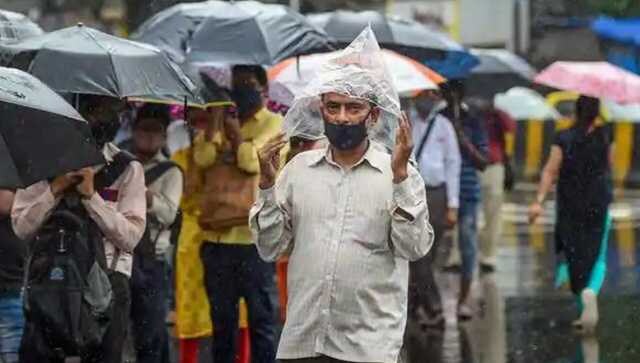Maharashtra braces for more rains, very intense shower spells in Raigad, Ratnagiri districts today evening
IMD has issued yellow alert for Mumbai and Orange alert for some Maharashtra districts - Raigad, Ratnagiri, Pune, Kolhapur, Satara and Chandrapur until Wednesday

IMD predicts intense to very intense spells of rain at places in the Raigad and Ratnagiri districts of Maharashtra. PTI
Mumbai: Intense to very intense spells of rain have been predicted at places in the Raigad and Ratnagiri districts of Maharashtra during the next 3-4 hours, the Mumbai IMD has said on Sunday evening.
It is worth mentioning that despite a dull start, Maharashtra has received 27 per cent more rains than normal in June and July.
According to the data by the Indian Meteorological Department (IMD), the coastal state has received 677.5 mm rainfall till 31 July, which is 27 per cent more than its normal figures.
The southwest monsoon usually arrives in Maharashtra around 7 June, but it got delayed this year and hit the state on 11 July.
Almost all districts in Maharashtra have been reporting either normal or excess rainfall over the last few days. Of the five districts reporting excess rainfall this monsoon, four are from drought-prone Marathwada. Nanded, Latur, Osmanabad and Beed have reported excess rainfall from Marathwada and Nashik from central Maharashtra has reported 68 per cent excess rainfall.
The weather department has predicted that with an active monsoon over the state till 11 August.
IMD issues rain alert for Maharashtra
As per IMD official Sushma Nair, yellow alert has been issued for Mumbai for the next four days owing to favourable weather systems which could result in heavy rainfall.
Orange alert (heavy to very heavy rainfall) has been announced for some districts in Maharashtra – Raigad, Ratnagiri, Pune, Kolhapur, Satara and Chandrapur – until Wednesday.
Sangli, Solapur, Bhed, Latur, Osmanabad, Aurangabad and Jalna will receive only light rainfall during this time.
According to IMD, a low-pressure area will form in the Bay of Bengal by Sunday and gradually deepen into a depression by early next week and move across Odisha, Chhattisgarh, Madhya Pradesh, Maharashtra and Gujarat in the next week.
These states are expected to experience widespread heavy to very heavy rains during 7 to 11 August. Maharashtra is expected to receive 240 mm rain till 13 August.
Meanwhile, IMD today said that climate change has hampered the ability of forecasting agencies to accurately predict severe events and the department is installing more radars and upgrading its high-performance computing system to meet the challenge
IMD Director General Mrutyunjay Mohapatra said that though the monsoon rainfall has not shown any significant trend in the country, the number of heavy rainfall events has increased and that of light rainfall events has decreased due to climate change.
"The impact-based forecast will improve to become "more granular, specific and accurate" by 2025 and IMD will be able to provide forecasts up to panchayat level clusters and specific areas in cities in the coming years," the IMD chief added.
With inputs from agencies
Read all the Latest News, Trending News, Cricket News, Bollywood News,
India News and Entertainment News here. Follow us on Facebook, Twitter and Instagram.
also read

Kerala rains: 18 dead, red alert in eight districts, five flights from Middle East diverted
Kerala rains: A red alert has been issued in Pathanamthitta, Alappuzha, Kottayam, Ernakulam, Idukki, Thrissur, Palakkad and Kannur district

Maharashtra records 27 per cent more rains than normal in June-July, despite dull start
Going by the long period average by the IMD, the rainfall over the country as a whole during the second half (August and September) of the season is most likely to be normal or 94 per cent to 106 per cent